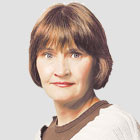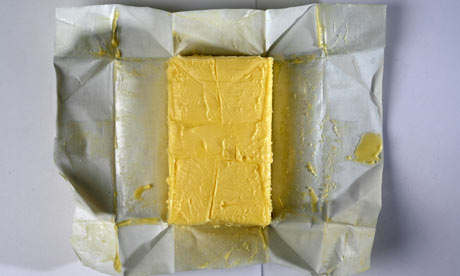http://www.nytimes.com/2010/01/03/education/edlife/03adult-t.html
How to Train the Aging Brain

GRAY MATTER Neurons make new connections during learning.
I LOVE reading history, and the shelves in my living room are lined with fat, fact-filled books. There’s “The Hemingses of Monticello,” about the family of Thomas Jefferson’s slave mistress; there’s “House of Cards,” about the fall of Bear Stearns; there’s “Titan,” about John D. Rockefeller Sr.

A really old brain — from a 19th-century textbook.
The problem is, as much as I’ve enjoyed these books, I don’t really remember reading any of them. Certainly I know the main points. But didn’t I, after underlining all those interesting parts, retain anything else? It’s maddening and, sorry to say, not all that unusual for a brain at middle age: I don’t just forget whole books, but movies I just saw, breakfasts I just ate, and the names, oh, the names are awful. Who are you?
Brains in middle age, which, with increased life spans, now stretches from the 40s to late 60s, also get more easily distracted. Start boiling water for pasta, go answer the doorbell and — whoosh — all thoughts of boiling water disappear. Indeed, aging brains, even in the middle years, fall into what’s called the default mode, during which the mind wanders off and begin daydreaming.
Given all this, the question arises, can an old brain learn, and then remember what it learns? Put another way, is this a brain that should be in school?
As it happens, yes. While it’s tempting to focus on the flaws in older brains, that inducement overlooks how capable they’ve become. Over the past several years, scientists have looked deeper into how brains age and confirmed that they continue to develop through and beyond middle age.
Many longheld views, including the one that 40 percent of brain cells are lost, have been overturned. What is stuffed into your head may not have vanished but has simply been squirreled away in the folds of your neurons.
One explanation for how this occurs comes from Deborah M. Burke, a professor of psychology at Pomona College in California. Dr. Burke has done research on “tots,” those tip-of-the-tongue times when you know something but can’t quite call it to mind. Dr. Burke’s research shows that such incidents increase in part because neural connections, which receive, process and transmit information, can weaken with disuse or age.
But she also finds that if you are primed with sounds that are close to those you’re trying to remember — say someone talks about cherry pits as you try to recall Brad Pitt’s name — suddenly the lost name will pop into mind. The similarity in sounds can jump-start a limp brain connection. (It also sometimes works to silently run through the alphabet until landing on the first letter of the wayward word.)
This association often happens automatically, and goes unnoticed. Not long ago I started reading “The Prize,” a history of the oil business. When I got to the part about Rockefeller’s early days as an oil refinery owner, I realized, hey, I already know this from having read “Titan.” The material was still in my head; it just needed a little prodding to emerge.
Recently, researchers have found even more positive news. The brain, as it traverses middle age, gets better at recognizing the central idea, the big picture. If kept in good shape, the brain can continue to build pathways that help its owner recognize patterns and, as a consequence, see significance and even solutions much faster than a young person can.
The trick is finding ways to keep brain connections in good condition and to grow more of them.
“The brain is plastic and continues to change, not in getting bigger but allowing for greater complexity and deeper understanding,” says Kathleen Taylor, a professor at St. Mary’s College of California, who has studied ways to teach adults effectively. “As adults we may not always learn quite as fast, but we are set up for this next developmental step.”
Educators say that, for adults, one way to nudge neurons in the right direction is to challenge the very assumptions they have worked so hard to accumulate while young. With a brain already full of well-connected pathways, adult learners should “jiggle their synapses a bit” by confronting thoughts that are contrary to their own, says Dr. Taylor, who is 66.
Teaching new facts should not be the focus of adult education, she says. Instead, continued brain development and a richer form of learning may require that you “bump up against people and ideas” that are different. In a history class, that might mean reading multiple viewpoints, and then prying open brain networks by reflecting on how what was learned has changed your view of the world.
“There’s a place for information,” Dr. Taylor says. “We need to know stuff. But we need to move beyond that and challenge our perception of the world. If you always hang around with those you agree with and read things that agree with what you already know, you’re not going to wrestle with your established brain connections.”
Such stretching is exactly what scientists say best keeps a brain in tune: get out of the comfort zone to push and nourish your brain. Do anything from learning a foreign language to taking a different route to work.
“As adults we have these well-trodden paths in our synapses,” Dr. Taylor says. “We have to crack the cognitive egg and scramble it up. And if you learn something this way, when you think of it again you’ll have an overlay of complexity you didn’t have before — and help your brain keep developing as well.”
Jack Mezirow, a professor emeritus at Columbia Teachers College, has proposed that adults learn best if presented with what he calls a “disorienting dilemma,” or something that “helps you critically reflect on the assumptions you’ve acquired.”
Dr. Mezirow developed this concept 30 years ago after he studied women who had gone back to school. The women took this bold step only after having many conversations that helped them “challenge their own ingrained perceptions of that time when women could not do what men could do.”
Such new discovery, Dr. Mezirow says, is the “essential thing in adult learning.”
“As adults we have all those brain pathways built up, and we need to look at our insights critically,” he says. “This is the best way for adults to learn. And if we do it, we can remain sharp.”
And so I wonder, was my cognitive egg scrambled by reading that book on Thomas Jefferson? Did I, by exploring the flaws in a man I admire, create a suitably disorienting dilemma? Have I, as a result, shaken up and fed a brain cell or two?
And perhaps it doesn’t matter that I can’t, at times, recall the given name of the slave with whom Jefferson had all those children. After all, I can Google a simple name.
Sally.















































